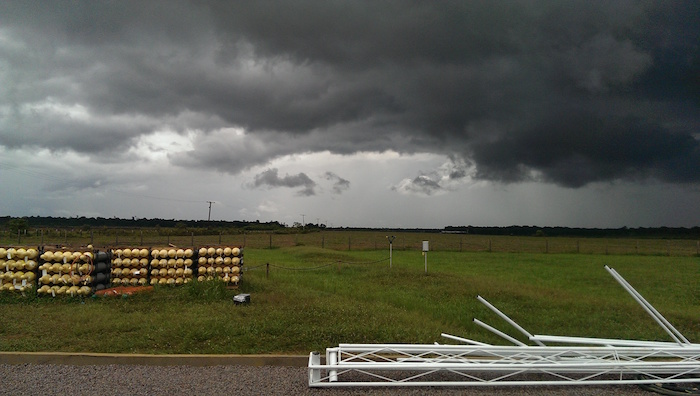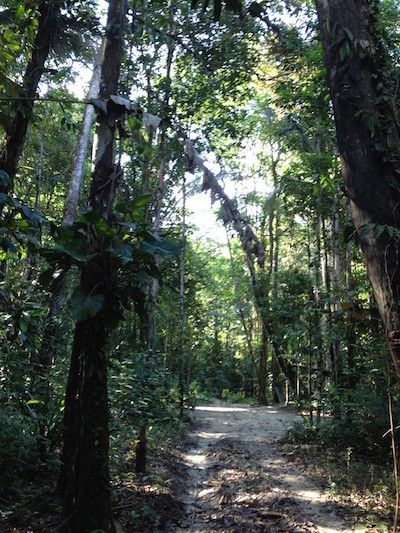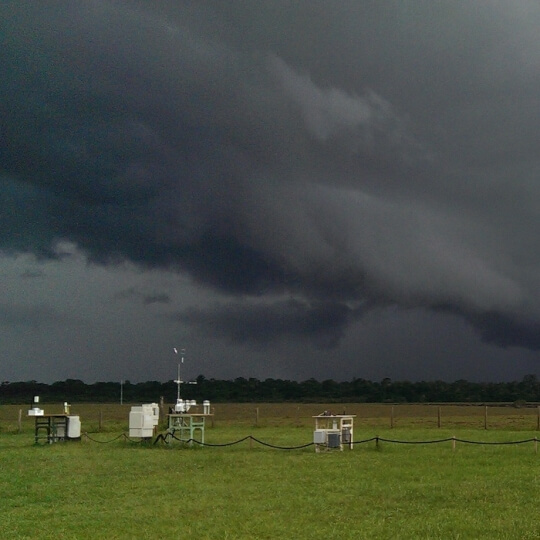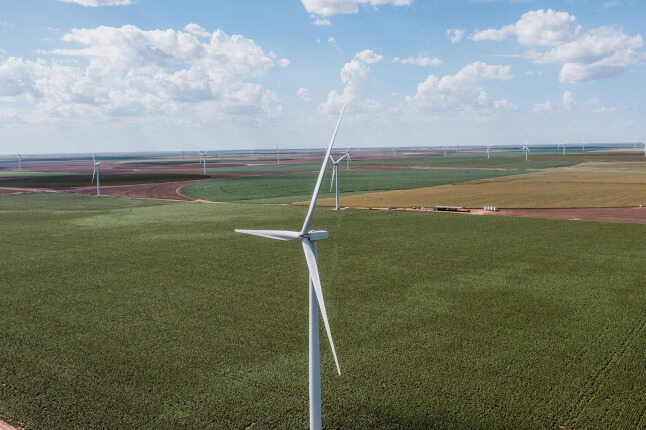News
Clouds form over the Amazon (Photo courtesy of Adam Bateman)

Clouds move over the Amazon rainforest
When it comes to understanding climate change, there is the easy part and the hard part. The easy part is understanding how greenhouses gasses such as carbon dioxide and methane trap solar radiation and warm the planet. The hard part is figuring out how atmospheric particles impact cloud formation, which scatters solar radiation and cools the planet.
Clouds, as you probably learned in grade school, are created as evaporated water forms droplets around airborne particles. Prior to the industrial revolution, these particles came from organic sources, like plants, or naturally occurring wildfires, dust storms, and sea spray. But beginning around 1750, humans have poured carbon, sulfate and other aerosols into the atmosphere, increasing atmospheric particulates up to 100-fold in many locations.
How this increase is affecting global climate change is unclear, in part because little is known about the behavior of these particles.
Now, research led by the John A. Paulson School of Engineering and Applied Sciences (SEAS) provides a new twist to a recently proposed theory about atmospheric particulates and paints a clearer picture of how these particles behave. The research, published in Nature Geoscience, found that atmospheric particles tied to plant life can be either solid or liquid depending on the environment in which they form. The findings expand on a previous study that posited such particles favor a solid state.
“These findings swing the scientific pendulum,” said Scot Martin, the Gordon McKay Professor of Environmental Chemistry, who led the research. “Clouds behave differently depending on whether they form on populations of solid or liquid particles. The state of the particles will determine which processes to include in models predicting climate change, enhancing the accuracy of these models.”

The previous research, which found that atmospheric particles over forests are in a solid or semisolid state, was conducted in a boreal (pine) forest in Finland. There, pine trees release alpha-pinene, an organic building block that reacts with other substances such as ozone to produce atmospheric organic particulate matter. (Alpha-pinene is also what we smell when we smell pine.)
Martin and his team decided to test that theory in the Amazon rainforest, which has about 80 percent humidity, compared to the pine forest’s 30 percent. In the Amazon, the reaction products of the compound isoprene provides the basic building block for atmospheric organic particulate matter.
The team found that 80 percent of the time, the atmospheric organic particles that formed in the Amazon were in a liquid state. Liquid particles absorb molecules from the gas phase and grow. Semi-solid particles, on the other hand, grow layer by layer and remain smaller, which affects the types of clouds that form and their propensity to rain.
“Our study found that regionality plays an important role in the state of liquid and dry particles,” said Adam Bateman, a postdoctoral fellow at SEAS and first author of the study. “The state of the particles depends on where you are, the kind of biome you have, and what the trees are emitting. Pine trees emit different compounds and do so in drier conditions, with the net result of particles that are semi-solid, and climate modeling will be different as a result.”
The research in the Amazon also provides a window back in time, to a pre-industrial world. Because the Amazon is so remote, it is protected from an influx of particles caused by industrial pollution.
“The Amazon represents a natural laboratory to explore what the world was like in 1750,” Martin said. “Here, we can ask questions about how these particles occur naturally, how big they get and what kind of clouds they form — and then compare that to the modern world. This research touches on all the topics of climate change that we need to think about, whether particulates are organic or not.”
The paper was coauthored by Zhaoheng Gong, Pengfei Liu, Bruno Sato, Glauber Cirino,Yue Zhang, Paulo Artaxo, Allan K. Bertram, Antonio O. Manzi, Luciana V. Rizzo, Rodrigo A. F. Souza and Rahul A. Zaveri.
Topics: Environment, Climate
Cutting-edge science delivered direct to your inbox.
Join the Harvard SEAS mailing list.
Scientist Profiles
Scot T. Martin
Gordon McKay Professor of Environmental Science and Engineering and Professor of Earth and Planetary Sciences
Press Contact
Leah Burrows | 617-496-1351 | lburrows@seas.harvard.edu



